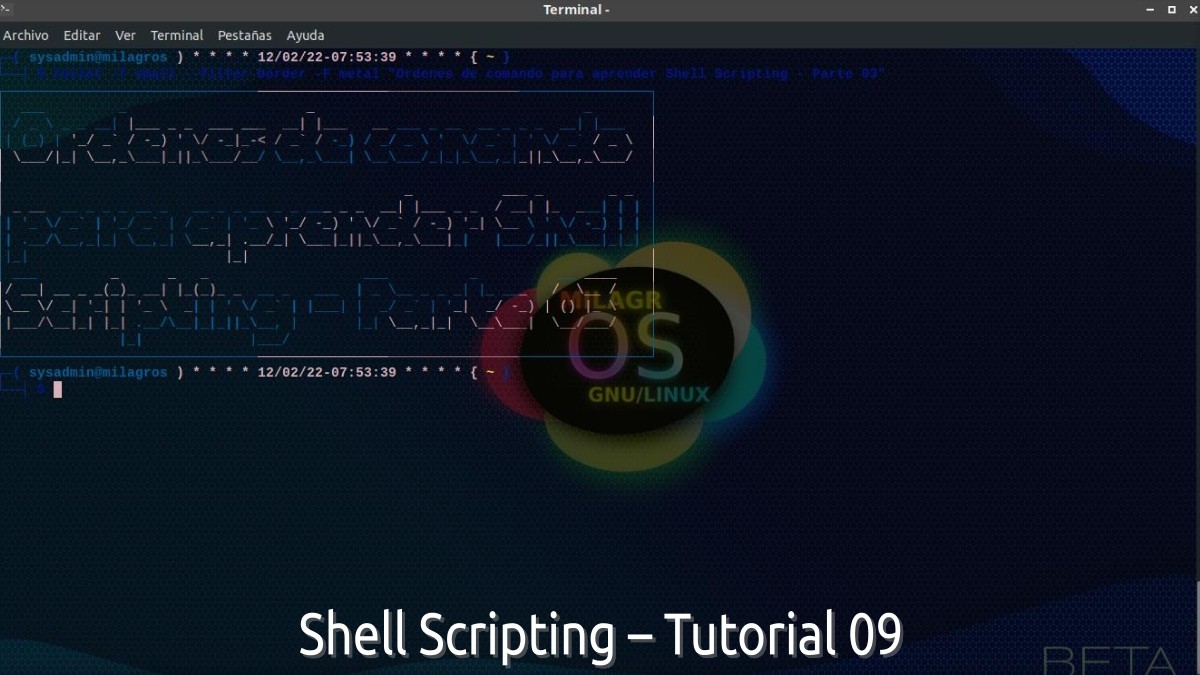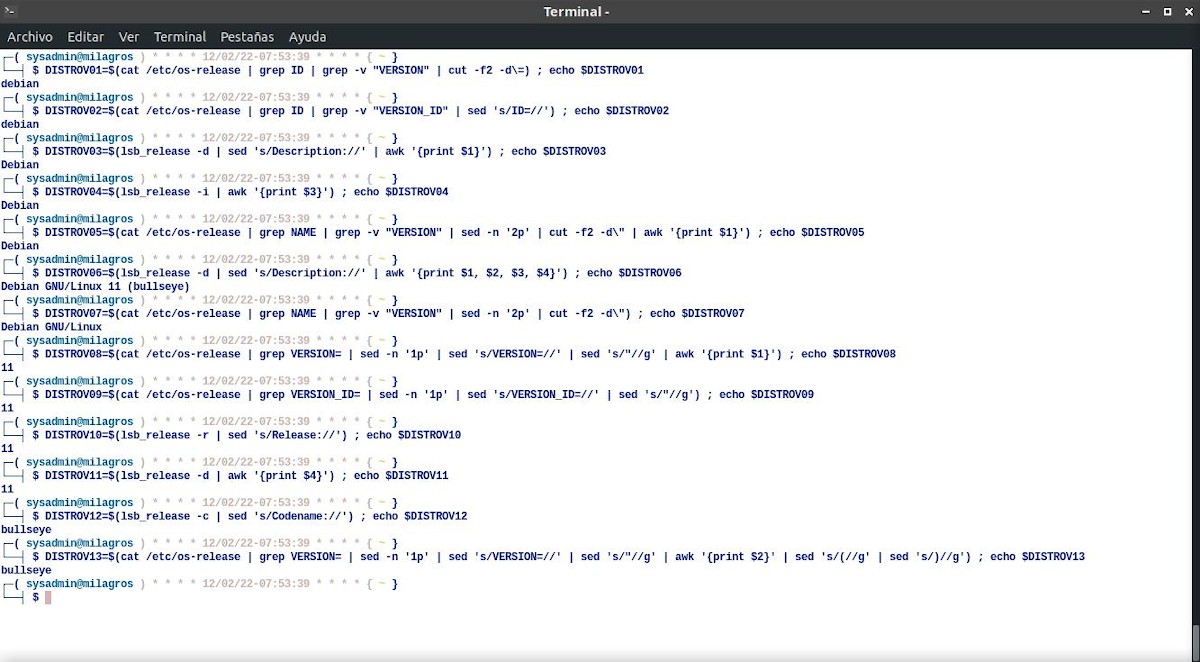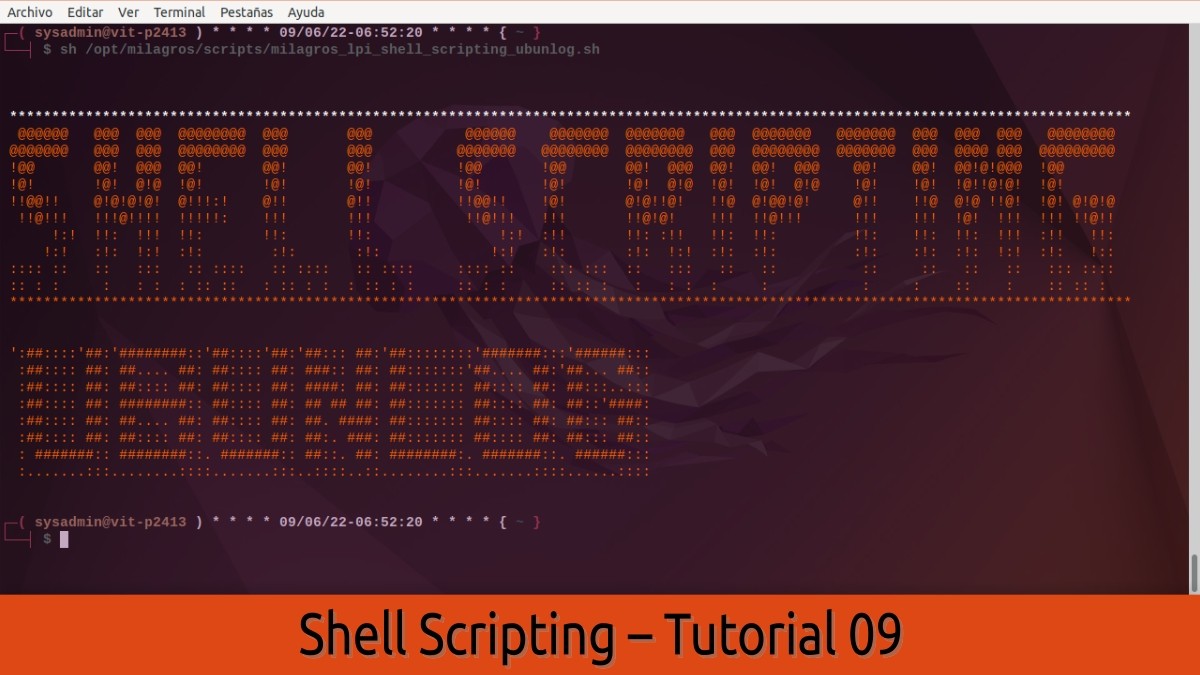
Shell Scripting – Tutorial 09: From theory to practice – Part 03
In this Tutorial 09 of our current series on Shell scripting, we will continue with another set of practical examples en forma de command orders, which we started at Tutorial 07.
And keep in mind that, in the previous tutorials 07 and 08 we have been addressing the practical part of Shell Scripting using command commands to extract parameters from the OS, and in the tutorials 06 and 05, we address various Online Resources and some Best Practices. While much of the theoretical basis of the scripting language was covered in the tutorials 04 to 01.
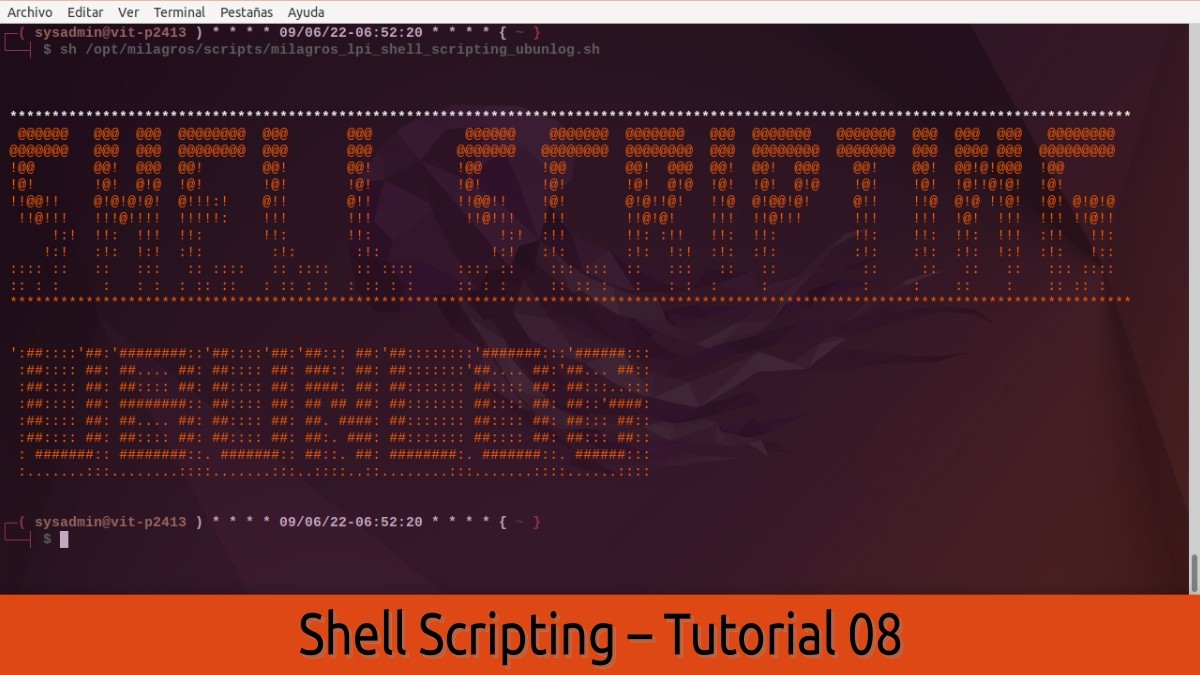
Shell Scripting – Tutorial 08: From theory to practice – Part 02
And, before starting this post called “Shell Scripting – Tutorial 09”, we will recommend you to also explore the following related contents, at the end of reading it:

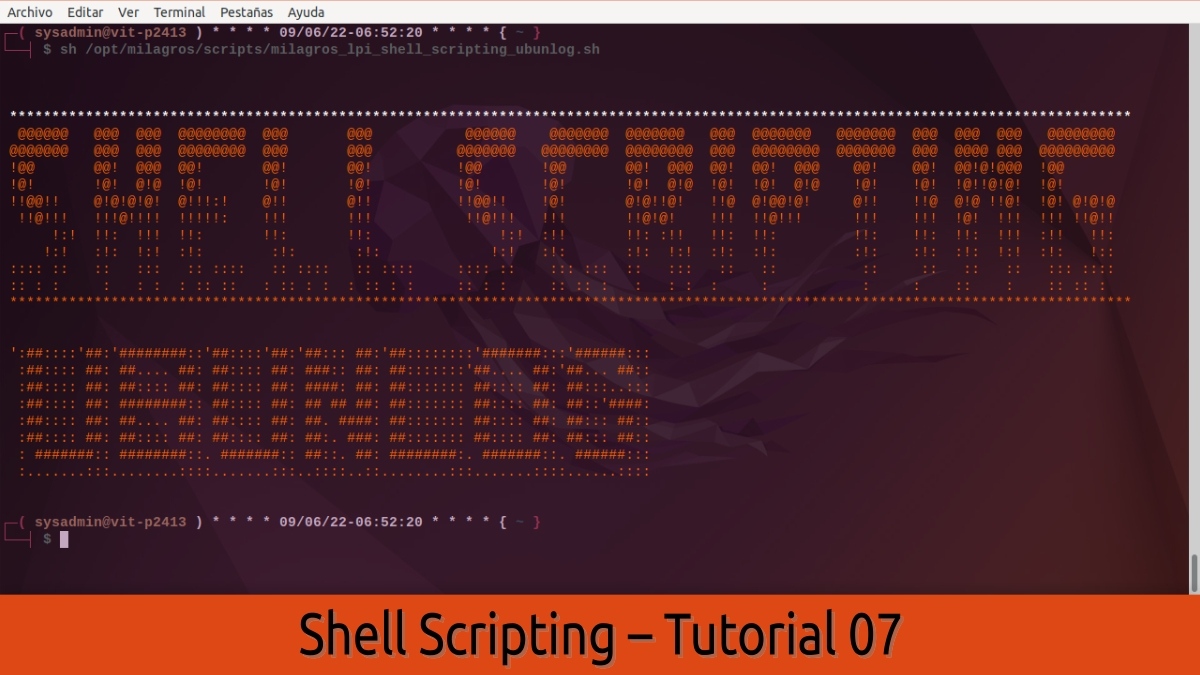
Shell Scripting Tutorial 09
Examples of commands to start in Shell Scripting
Extract values and parameters related to system identification data
Next, our command commands from today, for learn shell scripting
DISTROV01=$(cat /etc/os-release | grep ID | grep -v "VERSION" | cut -f2 -d\=) ; echo $DISTROV01
DISTROV02=$(cat /etc/os-release | grep ID | grep -v "VERSION_ID" | sed 's/ID=//') ; echo $DISTROV02
DISTROV03=$(lsb_release -d | sed 's/Description://' | awk '{print $1}') ; echo $DISTROV03
DISTROV04=$(lsb_release -i | awk '{print $3}') ; echo $DISTROV04
DISTROV05=$(cat /etc/os-release | grep NAME | grep -v "VERSION" | sed -n '2p' | cut -f2 -d\" | awk '{print $1}') ; echo $DISTROV05
DISTROV06=$(lsb_release -d | sed 's/Description://' | awk '{print $1, $2, $3, $4}') ; echo $DISTROV06
DISTROV07=$(cat /etc/os-release | grep NAME | grep -v "VERSION" | sed -n '2p' | cut -f2 -d\") ; echo $DISTROV07
DISTROV08=$(cat /etc/os-release | grep VERSION= | sed -n '1p' | sed 's/VERSION=//' | sed 's/"//g' | awk '{print $1}') ; echo $DISTROV08
DISTROV09=$(cat /etc/os-release | grep VERSION_ID= | sed -n '1p' | sed 's/VERSION_ID=//' | sed 's/"//g') ; echo $DISTROV09
DISTROV10=$(lsb_release -r | sed 's/Release://') ; echo $DISTROV10
DISTROV11=$(lsb_release -d | awk '{print $4}') ; echo $DISTROV11
DISTROV12=$(lsb_release -c | sed 's/Codename://') ; echo $DISTROV12
DISTROV13=$(cat /etc/os-release | grep VERSION= | sed -n '1p' | sed 's/VERSION=//' | sed 's/"//g' | awk '{print $2}' | sed 's/(//g' | sed 's/)//g') ; echo $DISTROV13Al run each command shown here, we will get a similar output (result), as shown in the following image:
Keep in mind that the idea with each command order is to break down what each command does within it, to see how Shell Scripting formats the output to be obtained. In such a way, to understand each step of the executed command order. For example, with the first example, the idea would be to execute everything as follows:
cat /etc/os-release
cat /etc/os-release | grep ID
cat /etc/os-release | grep ID | grep -v "VERSION"
cat /etc/os-release | grep ID | grep -v "VERSION" | cut -f2 -d\=
DISTROV01=$(cat /etc/os-release | grep ID | grep -v "VERSION" | cut -f2 -d\=) ; echo $DISTROV01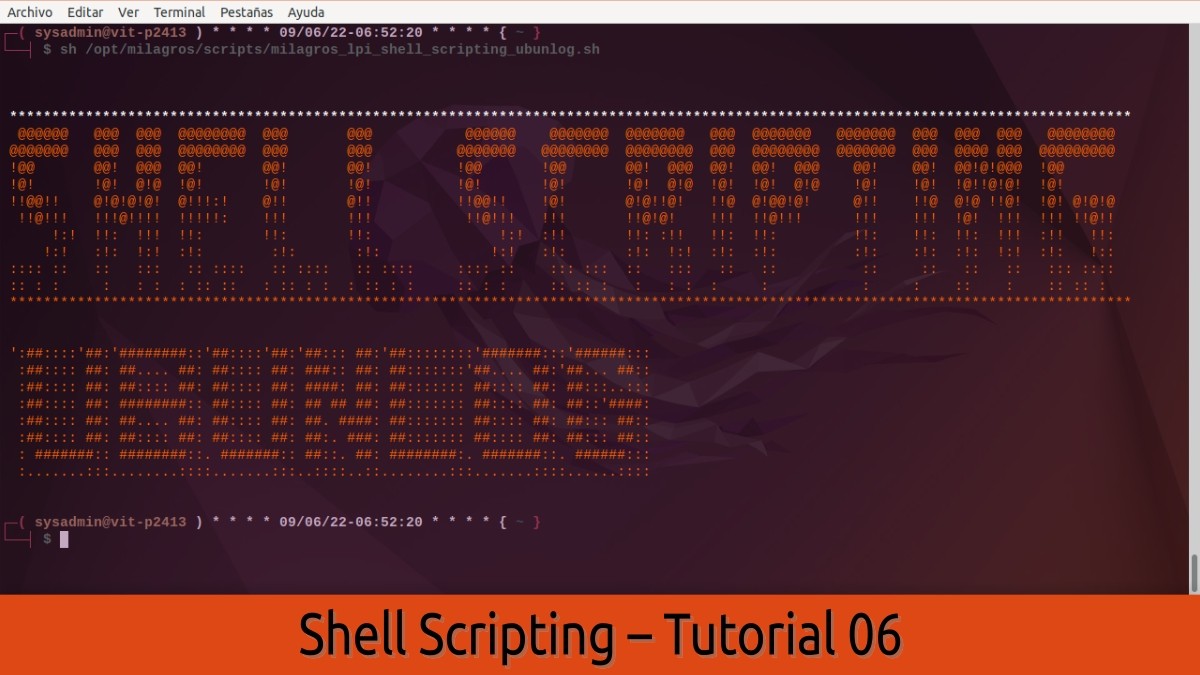
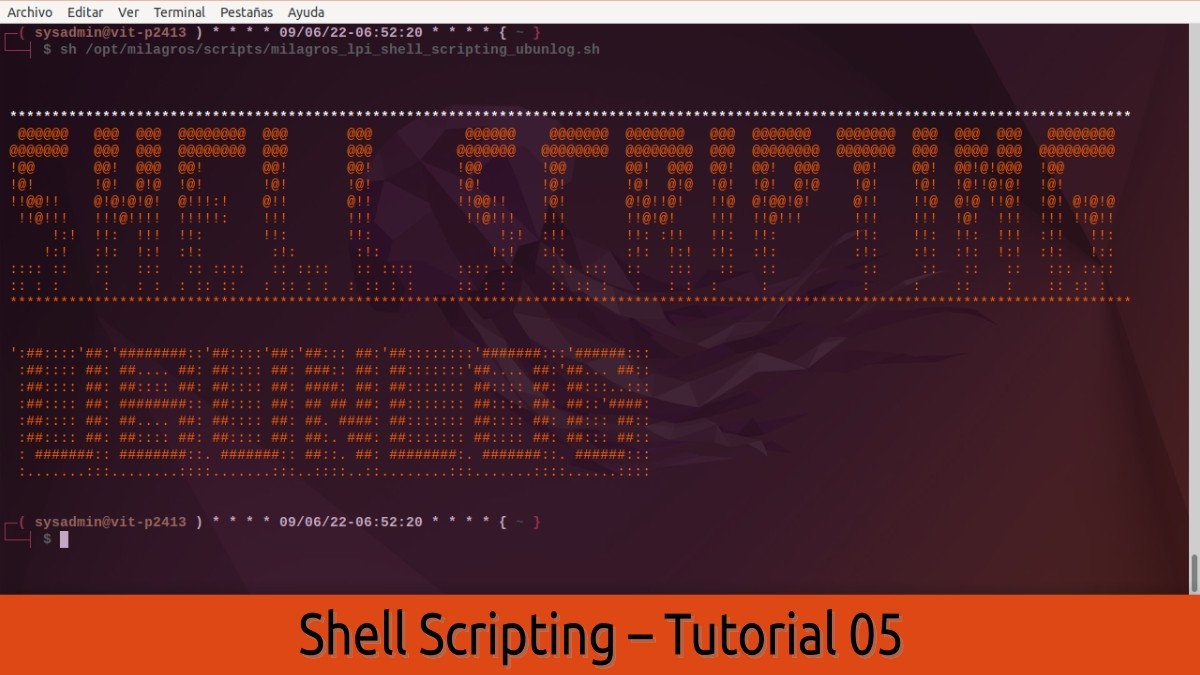
In short, we hope this Tutorial 09 on «Shell Scripting» continue to offer a small but valuable contribution in terms of goal of learning and understanding the potential of Shell Scripting Technique. And if you want to learn a little more, I invite you to explore the following YouTube channel, where regularly addresses in a practical way the power of shell scripting through technical and educational tool call LPI-SOA (Linux post Install – Advanced Optimization Script).
If you liked the content, comment and share it. And remember, visit the beginning of our «site», in addition to the official channel of Telegram for more news, tutorials and Linux updates. West group, for more information on today's topic or other related ones.
